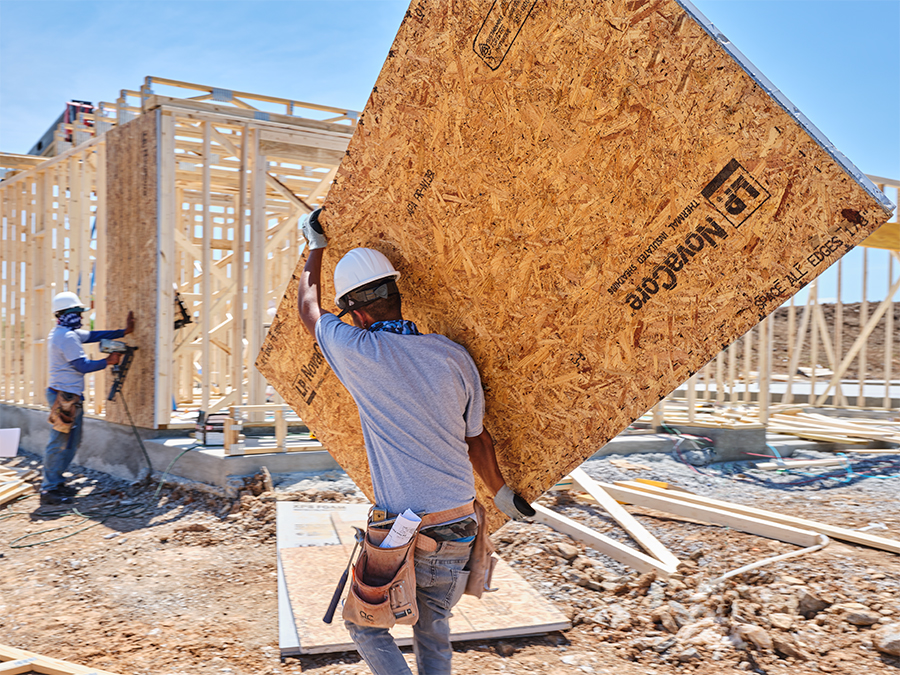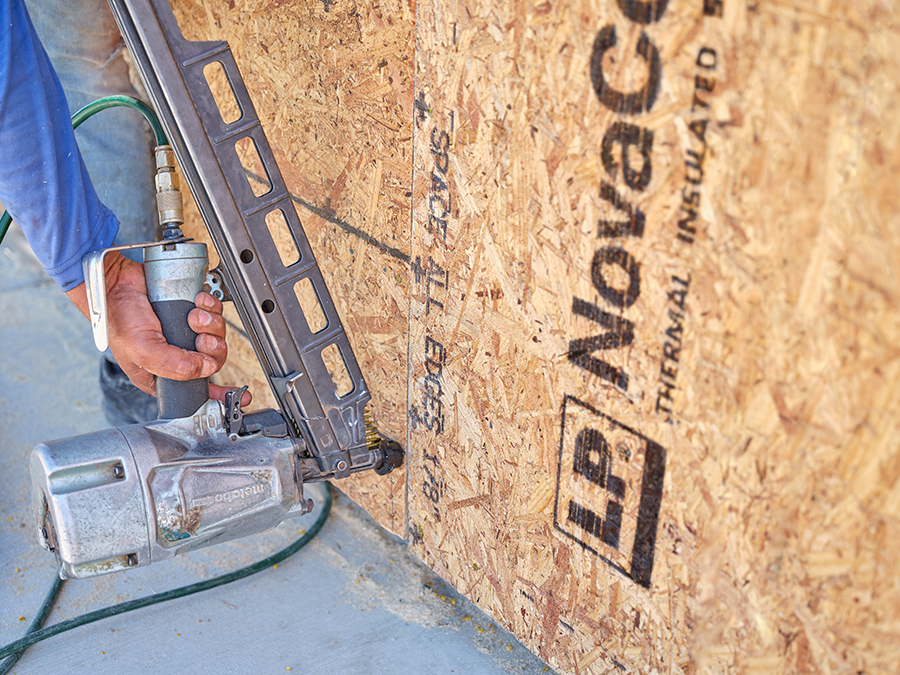Industry Trends6 min
Wintertime: How New Continuous Insulation Products Improve Homeowner Comfort
There's something about cold weather that puts insulation concerns front and center. While cavity insulation is the traditional way to insulate homes in both cold and warm climate zones, adding continuous insulation further improves heating and cooling efficiency. Let's take a look at the value of continuous insulation products.
Continuous Insulation Benefits
What is continuous insulation? It's an uninterrupted thermal barrier that helps reduce heat loss in or out of a building through "thermal bridging." Thermal bridging occurs at interruptions of traditional cavity insulation such as at wall studs which create a bridge for heat transfer between the exterior wall sheathing and the interior gypsum wall board.
"An assembly with continuous insulations outperforms an assembly without continuous insulation," says Neil Friedberg, Building Science Manager at LP Building Solutions. "If you have a wall system that doesn't protect against thermal bridging, heat you want inside the house during cold weather will be lost through the structure of the assembly."
Continuous insulation can be achieved with LP NovaCore™ Thermal Insulated Sheathing to help protect against heat loss in the winter and heat gain in the summer for a more comfortable home for homeowners. The insulated OSB product uses XPS foam to provide continuous insulation without the long-term R-value deterioration associated with other types of foam insulation.

Benefits of Continuous Insulation Wall System
Not all foam insulation products offer similar continuous insulation R-value performance in cold winter weather. Some polyiso foam materials, for example, can change from gas to liquid within their closed cells at 55 degrees Fahrenheit, losing their R-value benefits. "We test R-value at specific temperatures and relative humidity levels. What we learned over time is that not all materials are static," says Freidberg. "During the wintertime when you want better insulation performance, some polyisos provide little benefit from thermal bridging."
LP NovaCore insulated sheathing is different because it offers better performance when it's colder. "The R-value increases as it gets colder so your insulation insulates more," says Freidberg.
Why Continuous Insulation Wall Systems Reduce Heat Transfer
Your customers may urge you to simply add more insulation to the wall assembly, hoping it will provide a more comfortable home. "The structure of the home slows down heat transfer, but at a very minimal rate," says Freidberg. "When you're building a traditional single wall structure, regardless of being 2 x 6 or 2 x 4, you still have a thermal bridge that reduces the total effective R-values of the assembly."
Additionally, continuous insulation also reduces “cold” rooms.
"Have you ever walked into a room and felt an immediate cooling?" asks Freidberg. "There's no reason you should bring a sweater to a room-even if it's a northern exposure. By reducing thermal bridging and heat loss, continuous insulation helps reduce 'cold rooms.'"
Freidberg further explains insulated sheathing products like LP NovaCore sheathing allow builders to decrease the size of the HVAC or furnace, depending on the climate zone. "When you reduce heat loss, the long-term benefit is having a smaller unit, which consumes less energy," he says.
Value-Added Benefits of Continuous Insulation Products
“LP NovaCore Thermal Insulated Sheathing is what I call a two-in-one product,” says Freidberg. “It has structural properties, has been approved by the APA, cuts like OSB and installs like OSB.”
While continuous insulation isn't required by code in all climate zones, LP NovaCore insulated sheathing is certainly a value-added product that extends its benefits beyond winter construction. "Code itself is a minimum," says Freidberg. "I always ask, 'why build a house in 2023 with 2009 technology?' Adding continuous insulated sheathing is better for your customers regardless of using a 2 x 4 or 2 x 6 wall assembly. In the long run, you're helping the homeowner spend less money on energy and building a more comfortable home."

Continue Reading
Resiliency Solutions
5 minIntroducing LP® SmartSide® ExpertFinish® Naturals Collection™: Nature-Inspired Beauty Meets Engineered Performance
We're excited to introduce the LP® SmartSide® ExpertFinish® Naturals Collection™, a bold new addition to our trusted line of engineered wood siding and trim that delivers the warmth and beauty of nature with the advanced protection and performance builders and homeowners expect.
Labor Solutions
5 minChoosing the Right LP® Structural Solutions Product for Your Build
When it comes to building strong, reliable, and high-performing structures, the materials you choose matter. At LP Building Solutions, we understand that every project, whether it's a single-family home or a multifamily development, requires structural components that meet your needs for strength, durability, and efficiency.
Sustainability Solutions
5 minBuilding a More Sustainable Future with LP Building Solutions
In today's world, sustainability is no longer just a buzzword, it's a blueprint for responsible living and smarter building. As the construction industry seeks ways to reduce its environmental footprint, LP Building Solutions is focused on providing innovative building materials for eco-conscious builders to help reshape what it means to build sustainably
News & Stories3 min
History of Partnership with Gary Sinise Foundation
The LP Foundation is a proud partner of the Gary Sinise Foundation, which supports wounded veterans in several ways. You can learn more about the LP Foundation here.